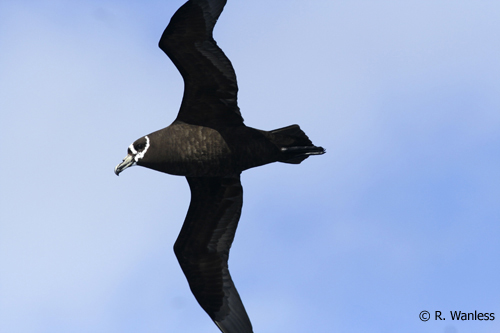Atlantic tuna commission meeting recommends stronger measures on bird bycatch
At a meeting of the Ecosystems Sub-committee of the International Commission for the Conservation of Atlantic Tunas (ICCAT), held in Recife, Brazil over 8-12 June 2009 (click here for agenda) scientists recommended that stronger measures be taken to combat bird bycatch on the high seas. The Sub-committee considered the output from models of the impacts of fishing on populations of four albatross species that breed in the South Atlantic. These species were selected on the basis of availability of relevant data on bird distribution and demography from a list of 22 seabird populations considered to be at high risk from ICCAT fisheries.

After examining the available evidence (relative overlap of bird distribution with fisheries, observed bird bycatch rates, model outputs and projections), the Sub-committee concluded that ICCAT fisheries have measurable impacts on some seabird populations, including several that are threatened with extinction, and that minimizing seabird mortality in ICCAT fisheries could result in improved population status and reduced conservation concerns.
The Sub-committee recommended that the existing ICCAT regulations on mitigation be strengthened to include a wider suite of cost-effective measures that, if properly applied, have been demonstrated to reduce levels of bird bycatch. These were that the exemption from use of bird-scaring lines during darkness in swordfish fisheries be removed, given the risks to nocturnal petrels and other birds active during moonlight. In addition, that bird-scaring lines in combination with weighted branch lines should be used by pelagic longliners throughout the ICCAT area, until such time that it can be demonstrated through direct observation that bycatch levels are of insignificant magnitude for seabird populations. The Sub-Committee also endorsed a suggestion by ACAP that more research be carried out into increasing the efficacy of existing mitigation measures and the development of additional measures, which, if shown to work, should be adopted in the ICCAT area.
There was agreement that analyses of impacts of fisheries on seabirds are hampered by the exceedingly low level of seabird observer coverage in most ICCAT fisheries. Consequently, the Sub-committee recommended that much more extensive information on bird bycatch rates be collected, particularly in order to assess the effectiveness of existing mitigation measures. Although no minimum level of observer coverage was stated, it was noted that the Indian Ocean Tuna Commission (IOTC) had recently instituted an observer programme with 5% coverage of fishing effort.
The recommendations of the Sub-committee will now be considered and adopted by the parent committee (the Standing Committee on Research and Statistics) and then by the Commission before they can come into effect.
The modelling project was an international collaboration between researchers from BirdLife International (BLI), British Antarctic Survey (BAS, UK), Commonwealth Scientific and Industrial Research Organisation (CSIRO, Australia), Percy FitzPatrick Institute of African Ornithology, University of Cape Town, South Africa (PFIAO) and the Royal Society for the Protection of Birds (RSPB, UK). Funding was provided by the UK Department for Environment and Rural Affairs (defra), CSIRO and the US National Marine Fisheries Service, with in-kind support from BAS, BLI, PFIAO and the RSPB.
News from Richard Phillips, British Antarctic Survey, 20 June 2009, posted 27 August 2009

 English
English  Français
Français  Español
Español